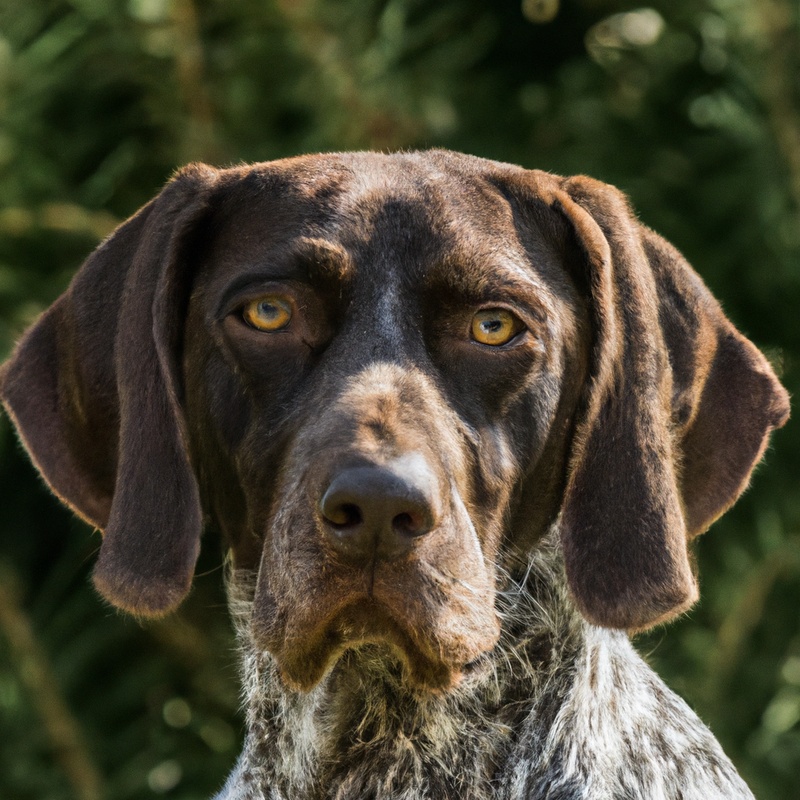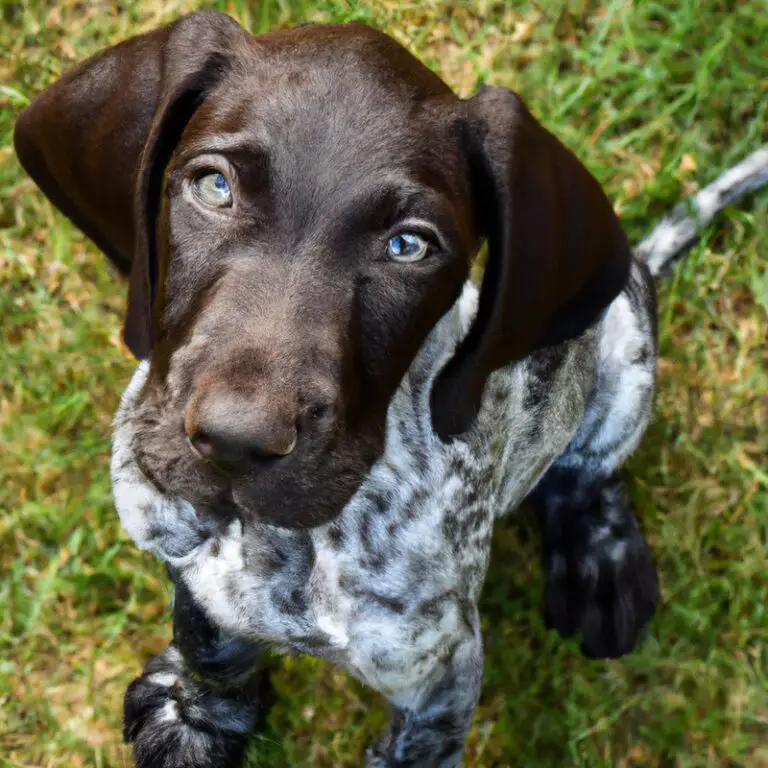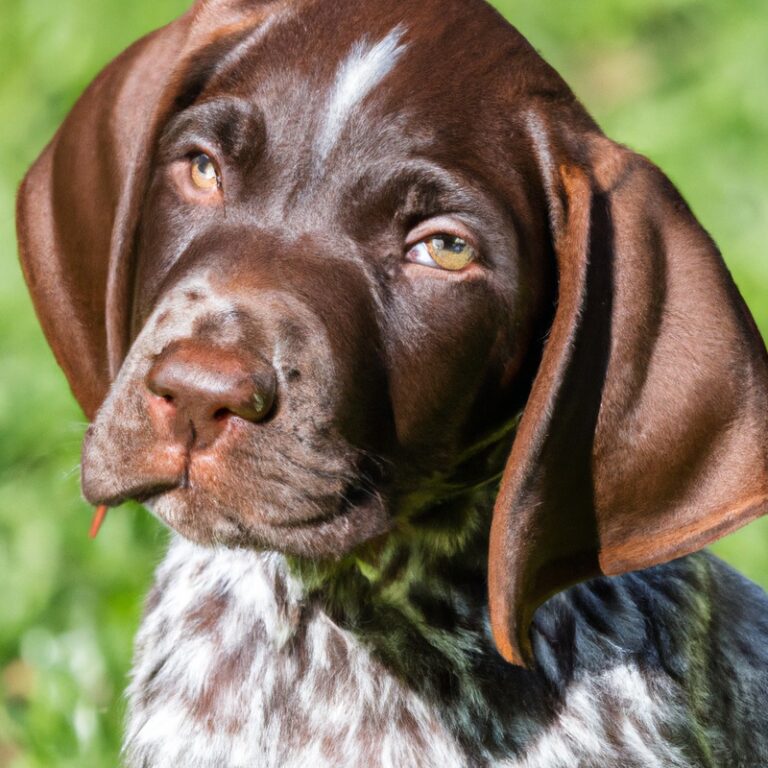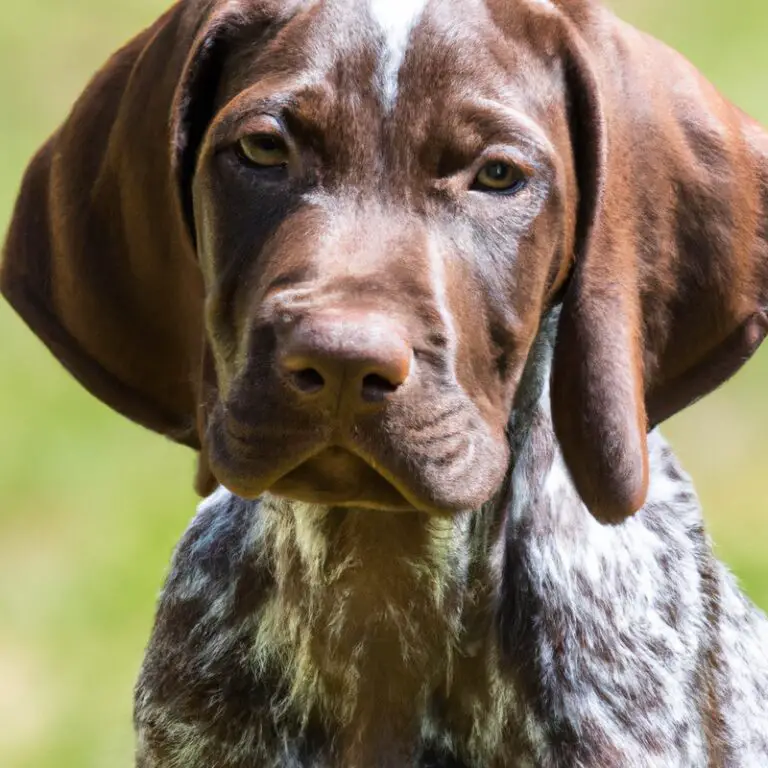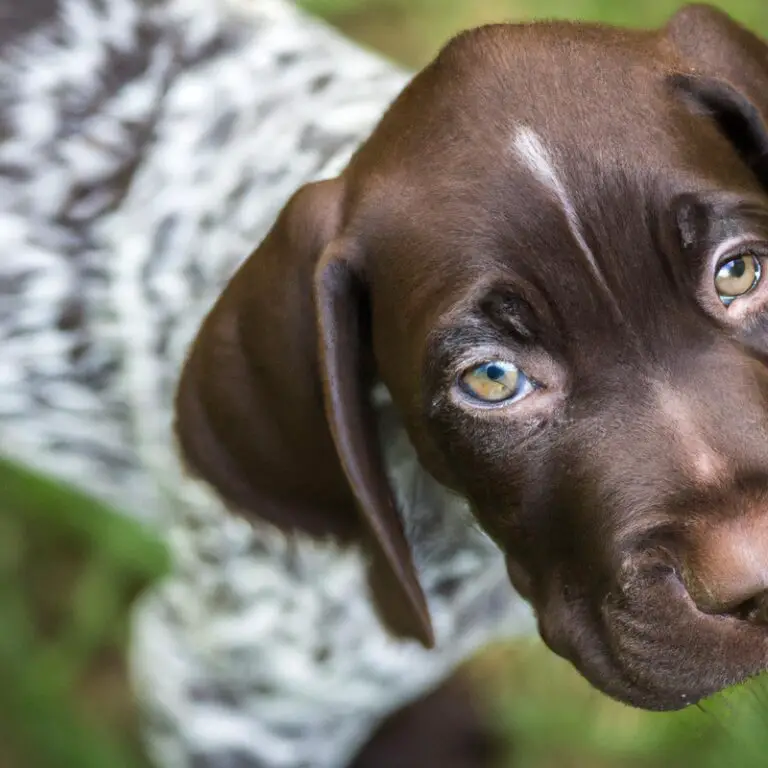What Are The Best Training Methods For German Shorthaired Pointers?
Key Takeaways:
- Consistency is key: When training German Shorthaired Pointers, it is crucial to establish a consistent routine and stick to it to ensure effective learning and behavior formation.
- Positive reinforcement yields results: Using positive reinforcement techniques, such as treats, praise, and rewards, can be highly effective in motivating and encouraging German Shorthaired Pointers during their training sessions.
- Socialization is essential: Exposing German Shorthaired Pointers to various social situations, including other dogs, humans, and different environments, from an early age can help them develop good manners, confidence, and adaptability.
- Focus on mental stimulation: German Shorthaired Pointers are intelligent and energetic breeds, so incorporating mental stimulation activities, like puzzle toys and scent tracking exercises, can help prevent boredom and channel their energy into constructive behavior.
Are you the proud owner of a German Shorthaired Pointer? These energetic and intelligent dogs require proper training to thrive.
But what are the best methods to ensure their success?
Well, you’ve come to the right place! As an expert in dog training, I’m here to guide you through the essential techniques and strategies that will transform your GSP into a well-behaved and obedient companion. From basic commands to advanced training, specialized skills to behavioral training, we’ll cover it all.
So, let’s dive in and explore the world of training German Shorthaired Pointers!
| Training Method | Description |
|---|---|
| Positive Reinforcement | A training method that rewards desired behaviors with treats, praise, or play. It focuses on reinforcing good behavior and ignoring unwanted behavior. |
| Clicker Training | Uses a *clicker* to mark desired behaviors, followed by a treat or reward. The clicker serves as a clear and consistent signal for the dog to associate with positive behavior. |
| Target Training | Teaches the dog to touch or target an object with their nose or paw. Target training helps in teaching various commands and behaviors such as targeting a spot, opening doors, or turning off lights. |
| Behavioral Training | Aims to modify the dog’s behavior by focusing on addressing specific issues, such as fear, aggression, or separation anxiety. This can involve techniques like desensitization, counter-conditioning, and behavior modification. |
| Obedience Training | Focuses on teaching the dog basic commands like sit, stay, lie down, come when called, and walking on a leash. It establishes a foundation of good behavior and builds a stronger bond between the dog and owner. |
| Consistency and Patience | While not a specific training method, consistency and patience are crucial for successful training. It involves regularly practicing commands, providing clear instructions, and being patient with the dog’s learning process. |
Importance of Training German Shorthaired Pointers
Benefits of training German Shorthaired Pointers
Training German Shorthaired Pointers offers numerous benefits for both you and your furry friend. Firstly, it helps establish a strong bond between you and your dog.
Through training, you’ll develop clear communication and mutual understanding.
This leads to a trusting and respectful relationship. Secondly, training enhances your dog’s mental stimulation.
German Shorthaired Pointers are intelligent and energetic, and a well-trained dog is a happy dog.
Training exercises challenge their minds, prevent boredom, and reduce behavioral issues, such as destructive chewing or excessive barking. Thirdly, training ensures your dog’s safety.
By teaching commands like “sit,” “stay,” and “come,” you can keep your dog out of harm’s way in potentially dangerous situations.
It also aids in developing good manners, making your dog more pleasant to be around and reducing the chances of incidents or conflicts with people or other animals. Lastly, training offers you a sense of pride and accomplishment.
Seeing your German Shorthaired Pointer master new skills and tasks is incredibly rewarding.
It boosts your confidence as a dog owner and allows you to fully enjoy your time together, whether it’s during outdoor adventures or everyday activities.
Consequences of not training German Shorthaired Pointers
Not training German Shorthaired Pointers can have several consequences. First and foremost, an untrained German Shorthaired Pointer can exhibit behavioral problems.
They may become aggressive, disobedient, or develop destructive habits like chewing furniture or digging up the yard.
This can lead to frustration for both the dog and the owner. Furthermore, an untrained German Shorthaired Pointer may struggle with basic commands and leash manners, making everyday activities like walks or interactions with other dogs challenging.
Additionally, without proper training, these dogs may have difficulty in socializing with people and other animals, potentially causing anxiety or fear-based reactions.
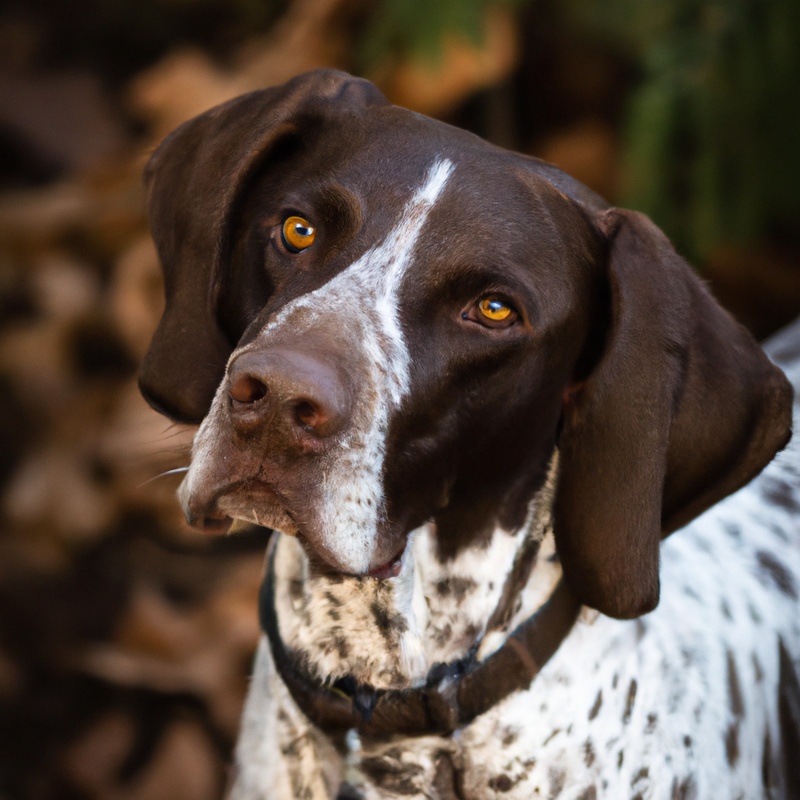
Basic Training for German Shorthaired Pointers
Establishing leadership and building trust
When training German Shorthaired Pointers, establishing leadership and building trust are fundamental. To establish leadership, it’s important to assert yourself as the leader of the pack.
This means setting clear rules and boundaries, being consistent with your commands, and rewarding good behavior.
Show your dog that you are confident and in control, which will help them feel secure and develop trust in you. Building trust with your German Shorthaired Pointer takes time and patience.
Be gentle and kind, using positive reinforcement techniques such as treats and praise when they follow commands correctly.
Spend quality time with your dog, engaging in activities they enjoy. This will help create a bond and strengthen the trust between you.
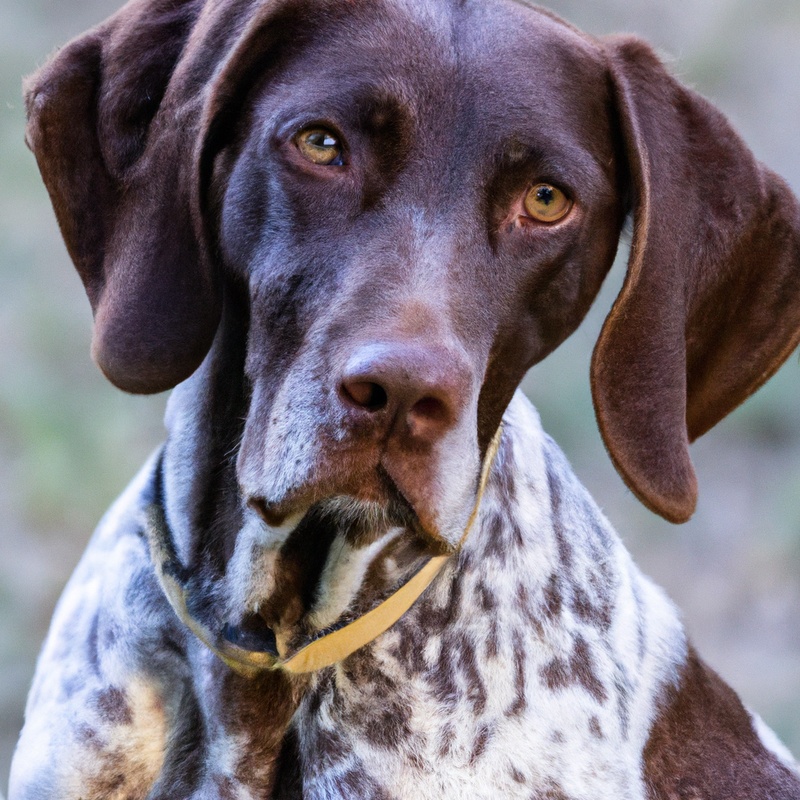
Housetraining and crate training
Housetraining and crate training are important aspects of training for German Shorthaired Pointers. First and foremost, consistency is key.
Make sure to establish a routine and take your pup outside regularly to the designated potty area.
Reward them with praise and treats for going in the right spot. Crate training can be beneficial for both housetraining and providing a safe space for your pup.
Introduce the crate slowly and make it a positive place by giving treats and toys inside.
Use the crate when you can’t supervise your pup, but remember not to leave them in there for too long.
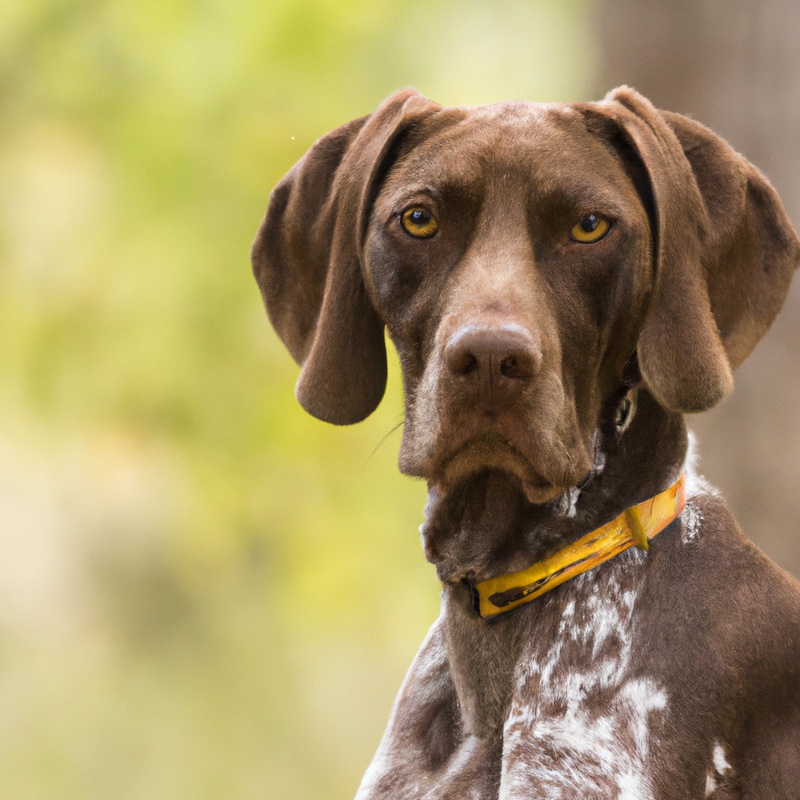
Teaching basic commands (sit, stay, come)
Teaching basic commands like sit, stay, and come is an essential part of training for German Shorthaired Pointers (GSPs). First and foremost, it’s important to be patient and consistent in your approach.
Start with sit: hold a treat above your GSP’s head and gently push their rear down while saying “sit.” Once they’re in the sitting position, reward and praise them.
For stay, have your GSP sit and tell them “stay” while taking a small step back. Gradually increase the distance and duration before rewarding them.
To teach come, use an upbeat tone and say their name followed by “come,” while crouching down and encouraging them towards you.
Reward and praise them when they reach you. Repeat these commands in different environments to reinforce their understanding.
Advanced Training for German Shorthaired Pointers
Advanced obedience commands (heel, down, leave it)
Advanced obedience commands like heel, down, and leave it are essential for ensuring that your German Shorthaired Pointer is well-behaved and responsive. Instead of relying on treats alone, it’s important to incorporate positive reinforcement techniques to reinforce these commands.
Start with heel, teaching your dog to walk calmly beside you without pulling on the leash.
Next, work on the “down” command, teaching your dog to lie down on command. Lastly, teach your dog the “leave it” command to prevent them from picking up or snatching things they shouldn’t have.
Remember to be patient and consistent with your training, and always reward your dog for successfully obeying these commands.
Retrieving and retrieving games
Retrieving and retrieving games are essential for training German Shorthaired Pointers. Engaging in these activities helps strengthen their natural instincts for hunting and retrieving objects.
One effective game is fetch, where you throw a toy or ball and encourage your dog to bring it back to you.
Another fun option is hide-and-seek, where you hide toys or treats for your dog to find and retrieve. These games not only provide mental stimulation for your dog but also improve their obedience and recall skills.
Remember to reward your dog with praise or treats when they successfully retrieve an item.
Off-leash training and recall
Off-leash training and recall are crucial aspects of training for German Shorthaired Pointers. First and foremost, it is important to establish a strong recall command, such as “come” or “here.” To train your GSP for off-leash recall, start in a controlled, distraction-free environment.
Use positive reinforcement and rewards, such as treats or praise, when your dog comes to you when called.
Gradually increase the level of distractions and practice in different locations. Consistency is key in off-leash training.
Practice the recall command regularly and reinforce it in different situations.
It’s important to remember that off-leash training takes time and patience. By consistently practicing recall and rewarding your GSP for coming to you, you will build a reliable off-leash recall.
Specialized Training for German Shorthaired Pointers
Tracking and scent work
Tracking and scent work are essential training methods for German Shorthaired Pointers. These dogs have a natural instinct for tracking scents, making them ideal for activities like search and rescue, tracking missing persons, and even hunting.
To start with tracking training, you’ll need a scent article like a piece of cloth with a person’s scent.
Introduce it to your dog and let them sniff it to associate the scent with something positive, like treats or playtime. Then, lay a scent trail and encourage your dog to follow it, rewarding them for success.
Gradually increase the difficulty of the trail over time.
Scent work involves training your dog to search and locate specific scents, whether it’s searching for hidden objects or differentiating between scents in a scent lineup. You can use specific scents like essential oils to teach your dog to identify and indicate the target scent.
Remember to make training sessions fun and rewarding for your German Shorthaired Pointer.
By incorporating these tracking and scent work exercises into their routine, you can stimulate their natural abilities and provide mental and physical enrichment. Happy training!
Agility training
Agility training is a fantastic way to keep your German Shorthaired Pointer mentally and physically active. This type of training involves teaching your dog how to navigate through obstacle courses with speed and precision.
Here are some key points to keep in mind when it comes to agility training:
- Start with basic commands: Before diving into the obstacle courses, make sure your dog has a solid foundation in basic commands like sit, stay, and come. These commands will help you guide your dog through the agility course.
- Introduce obstacles gradually: Begin with simple obstacles like jumps and tunnels, and gradually introduce more challenging ones like the A-frame and weave poles. Take it slow and give your dog plenty of positive reinforcement and encouragement.
- Use positive reinforcement: Positive reinforcement, such as treats and praise, is essential in agility training. Reward your dog for successfully completing each obstacle or following your commands correctly. This will motivate them to continue learning and performing well.
- Practice regularly: Consistency is key in agility training. Set aside regular practice sessions to work on different obstacles and improve your dog’s skills. Remember to keep the training sessions short and enjoyable, so your dog stays engaged and excited.
- Seek professional guidance if needed: If you’re new to agility training or facing challenges, don’t hesitate to seek help from a professional dog trainer or join a local agility class. They can provide valuable guidance and support to ensure both you and your dog have a successful training experience.
With these tips in mind, you’ll be on your way to enjoying the exciting world of agility training with your energetic German Shorthaired Pointer. Have fun and happy training!
Hunting and field training
Hunting and field training is an essential part of training German Shorthaired Pointers. This breed has a strong hunting instinct, so it’s important to channel their energy in a positive way.
Here are some key points to consider when it comes to hunting and field training for German Shorthaired Pointers:
- Exposure to the outdoors: To develop their hunting skills, it’s crucial to expose German Shorthaired Pointers to different outdoor environments. Take them on hikes, let them explore fields, and introduce them to various scents and terrain.
- Retrieval exercises: Teaching your German Shorthaired Pointer to retrieve birds or toys is an excellent way to simulate hunting situations. Start with short distances and gradually increase the difficulty level. Make it a fun and rewarding experience for them.
- Incorporate obedience training: Combine obedience commands with hunting exercises. Teach your dog to sit and stay before releasing them to retrieve or search. This helps to maintain control during hunting situations and ensures their safety.
- Introduce gun sounds: German Shorthaired Pointers need to get accustomed to the sound of gunfire to become comfortable in hunting scenarios. Start with low-level noises and gradually build up to louder sounds.
- Partner with a professional trainer: If you’re new to hunting and field training, consider seeking guidance from a professional trainer. They can provide expert advice, help you develop a training plan, and address any specific challenges you may face.
Socialization and Behavioral Training for German Shorthaired Pointers
Importance of socializing German Shorthaired Pointers
Importance of socializing German Shorthaired Pointers: Socializing your German Shorthaired Pointer is incredibly important for their overall well-being and behavior. It helps them become well-adjusted, confident, and friendly dogs.
German Shorthaired Pointers are naturally sociable dogs, but without proper socialization, they can become fearful or aggressive towards new people, animals, or situations.
By exposing your German Shorthaired Pointer to various environments, people, and animals from a young age, you are helping them develop good social skills and preventing future behavioral issues. Socialization also helps them feel comfortable in different situations, such as outings, vet visits, or visits to friends and family.
It allows them to adapt and handle new experiences with ease.
Addressing common behavior issues (barking, jumping, leash pulling)
Addressing common behavior issues such as barking, jumping, and leash pulling is essential for a well-behaved German Shorthaired Pointer. Here are some tips to help you tackle these problems:
1. Barking:
– Teach your dog a “quiet” command and reward them when they stop barking on command. – Distract your dog with toys or treats when they start barking excessively.
– Identify the triggers for their barking and work on desensitizing them to those triggers.
2. Jumping:
– Ignore your dog’s jumping behavior and only give attention when they have all four paws on the ground. – Teach your dog an alternate behavior, like sitting, whenever they approach you or guests.
– Use positive reinforcement to reward your dog for keeping all paws on the ground.
3. Leash pulling:
– Start by teaching your dog loose leash walking indoors or in a quiet, distraction-free area. – Use treats or toys to reward your dog for walking calmly beside you.
– Be consistent and patient, gradually increasing the level of distractions as your dog improves.
Positive reinforcement and reward-based training methods
Positive reinforcement and reward-based training methods are highly effective when it comes to teaching German Shorthaired Pointers. Rather than focusing on punishment or force, these methods rely on encouraging and rewarding desired behaviors.
By incorporating positive reinforcement into training sessions, such as giving treats, praise, or playtime when your dog follows a command or displays good behavior, you create a positive association with training.
This motivates your German Shorthaired Pointer to repeat those behaviors in the future. Reward-based training methods also involve using rewards, such as treats or toys, to reinforce desired behaviors.
For example, if you want your dog to sit, you can use a treat to guide them into the desired position and reward them with the treat once they are sitting.
This helps your German Shorthaired Pointer understand what you want and encourages them to repeat the behavior.
Professional Training Options for German Shorthaired Pointers
Group obedience classes
Group obedience classes are a great training option for German Shorthaired Pointers. These classes provide an opportunity for your dog to socialize with other dogs and learn in a group setting.
In these classes, a professional trainer will guide you through various obedience exercises, such as sit, stay, and heel.
The benefits of group obedience classes are numerous. Your dog will learn to follow commands even in a distracting environment filled with other dogs and people.
It also helps them develop better focus and attentiveness.
Moreover, these classes provide a structured and controlled environment, ensuring a positive and rewarding learning experience for your furry friend. Group obedience classes not only teach basic obedience skills but also help strengthen the bond between you and your German Shorthaired Pointer.
You will also get the chance to connect with other dog owners, exchange tips and experiences, and receive guidance from the trainer.
So, if you want your German Shorthaired Pointer to build good manners, socialize effectively, and become a well-behaved companion, group obedience classes can be an excellent choice. Don’t hesitate to enroll your pup in one of these classes and witness the positive transformation in their behavior and obedience.
Private training sessions with a professional dog trainer
Private training sessions with a professional dog trainer can be incredibly valuable when it comes to training your German Shorthaired Pointer. In these one-on-one sessions, you and your dog get the undivided attention of an experienced trainer who can tailor the training to your specific needs.
They can help you address any behavior issues, teach basic commands, and work on more advanced training techniques.
The trainer will guide you through the training process, ensuring that you and your dog are on the same page and making progress together. The personalized approach of private training sessions can greatly accelerate your dog’s learning and create a strong foundation for future training.
Board and train programs
Board and train programs are a popular training option for German Shorthaired Pointers (GSPs). These programs involve sending your dog to a professional trainer who will work with them intensively for a certain period of time, usually weeks or months.
During their stay, your GSP will receive daily training sessions, socialization, and exposure to various environments and stimuli.
The trainer will work on specific commands, basic obedience, and address any behavioral issues. One of the key benefits of board and train programs is that your dog will receive consistent and focused training from a professional.
It can be especially helpful for busy owners who may not have the time or expertise to train their GSP effectively.
However, it’s important to choose a reputable and experienced trainer who uses positive reinforcement techniques. Make sure to ask about their training methods, and if possible, visit the facility beforehand to see the conditions for yourself.
Keep in mind that board and train programs are not a one-size-fits-all solution.
While they can be effective for many GSPs, it’s also important for you as the owner to continue the training and reinforce what your dog has learned once they return home. Consistency and ongoing practice are crucial for long-term success.
Training Tips and Techniques for German Shorthaired Pointers
Consistency and patience in training
Consistency and patience are key factors in successfully training your German Shorthaired Pointer. First and foremost, it’s important to establish a consistent routine.
This means setting a regular schedule for training sessions and sticking to it.
Dogs thrive on routine, so they know what to expect and can better understand what is expected of them. Patience is also vital.
Training takes time, and every dog learns at their own pace.
It’s important not to rush or get frustrated if your dog doesn’t grasp a command right away. Stay calm, positive, and patient, and keep practicing.
Eventually, your German Shorthaired Pointer will understand what you’re asking of them.
Consistency and patience go hand in hand. By consistently practicing and being patient, you will build a strong bond with your dog and help them become a well-behaved and obedient companion.
Using positive reinforcement techniques
Using positive reinforcement techniques is one of the most effective ways to train German Shorthaired Pointers. It involves rewarding desired behaviors with treats, praise, or other forms of positive reinforcement.
First and foremost, it’s important to be consistent in your training.
This means providing rewards consistently when your dog exhibits the desired behavior. Another key tip is to start with small and achievable goals.
Break down the desired behavior into small steps and reward your dog for each step they successfully accomplish.
Using a clicker can also be helpful in positive reinforcement training. The sound of the clicker can be associated with receiving a reward, which helps to reinforce the desired behavior.
Remember to be patient and avoid punishment or negative reinforcement.
Positive reinforcement focuses on rewarding good behavior, rather than punishing bad behavior. This creates a more positive and enjoyable training experience for both you and your German Shorthaired Pointer.
Training exercises and games to keep the dog engaged
When it comes to training exercises and games for German Shorthaired Pointers, there are plenty of fun and engaging options to keep your dog active and mentally stimulated. First and foremost, interactive toys like puzzle feeders or treat-dispensing toys can provide mental enrichment while also keeping your dog entertained.
These toys require your dog to problem-solve and work for their food, which can help prevent boredom and destructive behavior.
Another great option is scent training. German Shorthaired Pointers have a fantastic sense of smell, so hiding treats around the house or teaching them to find specific scents can be a rewarding and challenging activity.
Additionally, agility training and obstacle courses can be both physically and mentally stimulating for your dog.
You can set up jumps, tunnels, and weave poles in your backyard or find a local agility class to teach your dog new skills and improve their coordination. Lastly, incorporating obedience training into playtime can be beneficial.
Use commands such as sit, stay, and come during games of fetch or hide-and-seek to reinforce good behavior while keeping your dog engaged.
By implementing these training exercises and games into your routine, you can keep your German Shorthaired Pointer mentally sharp, physically active, and happy.
Troubleshooting Common Training Challenges with German Shorthaired Pointers
Dealing with stubbornness and independence
Dealing with stubbornness and independence in German Shorthaired Pointers can be a challenge, but it’s definitely manageable. First and foremost, patience is key.
These dogs can be strong-willed and like to do things their own way, so try not to get frustrated.
Instead, focus on positive reinforcement training methods. Use rewards like treats or praise to motivate them and make training sessions fun and engaging.
Also, consistency is important.
Set clear boundaries and stick to them. And don’t forget to provide plenty of mental and physical stimulation to prevent boredom, as this can contribute to their stubbornness.
Overcoming distractions during training
Overcoming distractions during training is a common challenge, but with the right approach, you can help your German Shorthaired Pointer stay focused. First and foremost, start in a quiet and familiar environment, gradually introducing distractions as your dog becomes more comfortable.
Keep training sessions short and engaging, using positive reinforcement to reward good behavior.
If your dog gets easily distracted, try using a leash or a training tool to maintain their attention.
Modifying training techniques for different learning styles
When it comes to training German Shorthaired Pointers, it’s important to remember that each dog has their own unique learning style. By modifying your training techniques to suit these different learning styles, you can achieve much better results and create a more effective training experience for both you and your furry friend.
First and foremost, observe your dog closely to determine their learning style.
Some dogs are visual learners, while others are more responsive to auditory cues. Pay attention to how your dog responds to different training methods and adjust your approach accordingly.
Here are some tips for modifying training techniques for different learning styles:
- Visual learners: If your dog is a visual learner, use visual cues such as hand signals or body language to communicate what you want them to do. Make sure your body movements are clear and consistent. Incorporate visual aids such as colored markers or flags to guide them during training exercises.
- Auditory learners: For dogs that respond better to auditory cues, use verbal commands and a clear, consistent tone of voice. Repeat commands and praise them verbally when they perform desired behaviors. Consider using clicker training, where a clicking sound is associated with positive reinforcement.
- Kinesthetic learners: Some dogs learn best through physical interaction and hands-on training. Incorporate interactive activities such as games, agility exercises, or obedience trials that allow your dog to use their body and instincts. Use physical touch and rewards like treats or playtime to reinforce desired behaviors.
Maintaining Training Success for German Shorthaired Pointers
Regular practice and reinforcement of training commands
Regular practice and reinforcement of training commands are essential for the successful training of German Shorthaired Pointers. By consistently practicing commands such as sit, stay, come, and heel, you reinforce the desired behaviors and help your dog understand what is expected of them.
It’s important to incorporate these training sessions into your daily routine to ensure consistency and progress.
Regularly praising and rewarding your dog for correctly following commands will further reinforce their understanding and motivation to learn. With dedication and consistency, regular practice and reinforcement will help your German Shorthaired Pointer become a well-trained and obedient companion.
Continuing training throughout the dog’s life
Continuing training throughout your German Shorthaired Pointer’s life is essential for maintaining their skills and behavior. Dogs, like humans, continue to learn and develop throughout their lives.
By consistently incorporating training into their routine, you can reinforce good behavior, prevent regression, and strengthen your bond with your furry friend.
Regular training sessions, even if they are short, can help keep your German Shorthaired Pointer mentally stimulated and physically active. Remember to be patient and consistent, using positive reinforcement techniques to encourage desired behaviors.
With ongoing training, you can ensure a well-behaved and happy dog for years to come.
Incorporating mental stimulation and physical exercise
Incorporating mental stimulation and physical exercise is key when training German Shorthaired Pointers. These energetic dogs thrive on both mental and physical challenges, so it’s important to provide them with a balanced routine.
For mental stimulation, consider puzzle toys, interactive games, or training sessions that engage their intelligent minds.
This can include obedience training, scent work, or agility exercises. Giving them tasks to solve or a job to do will keep their minds sharp and prevent boredom.
In addition, don’t forget about physical exercise.
German Shorthaired Pointers are active breeds and need plenty of outlets for their energy. Daily walks, runs, or play sessions in a secure area are essential.
You can also try activities like swimming or hiking to keep them physically fit.
Final Verdict
Training German Shorthaired Pointers is of utmost importance for their overall well-being and harmonious integration into our lives. By establishing leadership, providing consistent guidance, and utilizing positive reinforcement techniques, we can build a strong bond of trust with our furry companions.
From basic obedience to advanced skills, specialized tasks, and socialization, there are various training methods available.
Whether through professional assistance or consistent practice at home, we can overcome challenges and shape our German Shorthaired Pointers into well-behaved and happy dogs. Remember, training is not a one-time effort but a lifelong commitment to maintaining a well-trained and contented furry friend.

